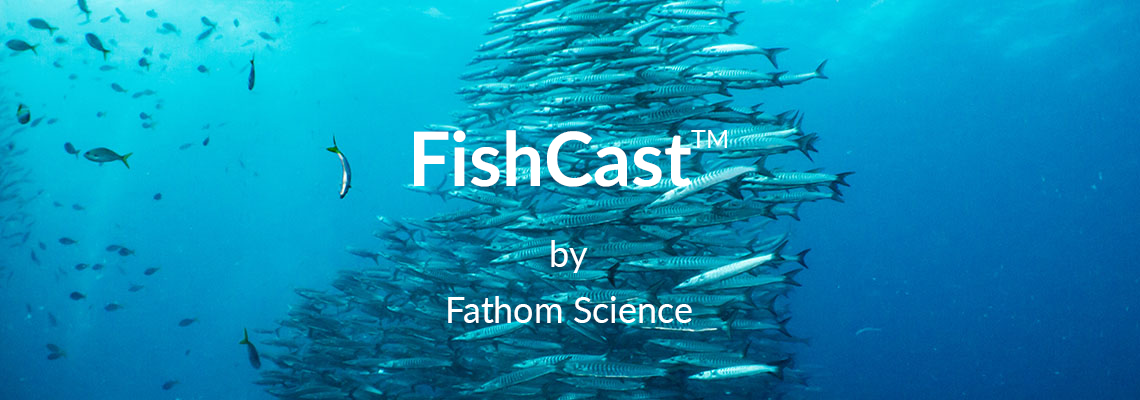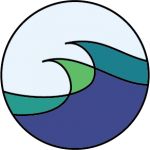Frequently Asked Questions
FAQs
Membership
How do I get FishCast maps?
Go to the FishCast home page. Scroll down to the map that shows the FishCast regions (purple boxes). Click a region that you want a membership to. That will take you to a page with more information about that region’s maps. Click the GET MEMBERSHIP button near the top of the region page to go to the purchasing page, which has details of what your membership includes.
How do I access my maps once I purchase a membership?
To access your maps, go to the FishCast home page. In the top menu, click My Profile then Log In. Enter your user name and password. You will be returned to the home page after you log in. Scroll down to the master map. Click the region that you have an active membership to. Scroll down to find the grid of times for the three types of Maps. Click the time you are interested in viewing. If you are logged into an active membership, the map will be displayed. If you get a message saying you don’t have access to the region, go back to the region page and click the GET MEMBERSHIP button near the top of the region page, (see “How do I find out which regions I have a membership to or when my membership expires?” below.)
How do I find out which regions I have a membership to or when my membership expires?
In the menu at the top of the page, go to My Profile / My Memberships. Under My Memberships is the list of memberships you purchased. You’ll see a list of the region(s) you have a membership for and the expiration date. If you can’t access your maps, your membership might have expired.
How do I change my user information, including password?
In the menu at the top of the page, click My Profile then Edit My Profile. Log in with your current user name and password. The Edit My Profile page now allows you to modify your personal settings, including your password.
What if I want to add a region to my membership?
You can add a region by simply purchasing a membership to the new region. Go to the region page you’re interested in then click the GET MEMBERSHIP button near the top of the page. Your membership to a region expires based on when you purchased that region. Adding a new region doesn’t change the expiration date of a region you already have.
Payment
How much is it to get a FishCast membership?
Each region has pricing options for a day, week, month, and year. To purchase a membership, see the current price list, and get details about what a membership includes, click the GET MEMBERSHIP button near the top of any region page. For each region membership, you get hourly SST, Chlorophyll, and Optimal Catch Location maps, updated daily, and a two day forecast!
How do I pay? Is it secure?
We have teamed up with a major online payment processing company (Stripe) to support our online payment platform. You can rest assured that your payment information will be kept confidential. After processing, your credit card statement will show a transaction from “Fathom Science LLC”.
Data
How can you have always cloud-free sea surface temperature (SST)?
We use the proprietary technology we developed over 25 years of university-based oceanography research to create a complete sea surface temperature map. We start with real-world data, including satellite data, then use cloud computing to create the industry’s most accurate, ultra-high resolution SST maps. Our cutting-edge models create cloud-free images every day, even when satellite images are blocked by clouds.
What does SST mean?
SST is short for Sea Surface Temperature. By “surface” we mean the very top layer, also called “skin temperature.”
Why is SST I measured on my boat different than what shows on your maps?
Sea surface temperature shown on our maps is the “skin temperature” of the ocean—literally the surface. Your boat temperature sensor is deeper in the water, below the surface. Water there will be a different temp than the skin temp, especially in the summer. Also, SST can be affected by conditions that arise during the day, such as strong sun, wind, and waves. For finding fish, the temperature gradient is more important than the exact temperature.
What goes into your Optimal Catch Location maps?
Our Optimal Catch Location maps show the likelihood of catching large game fish at the given day and time shown on the map. We consider marine conditions and predator habitat preferences to show you where in a region big fish are most likely to be found. We can’t predict whether the fish feel like biting, though!
Maps
What are region pages?
FishCast currently covers the U.S. East and West Coasts, some Canadian Atlantic coast, the Gulf of Mexico, the Caribbean Sea, the Pacific Coast of Central America, and northern South America. This massive area is divided into regions. To see all the regions available, go to the FishCast home page, scroll to the large map with purple boxes. To get details of what a region includes, click on the region. That will take you to the region page with sample maps, downloadable SST, Chlorophyll, and Optimal Catch Location maps for members, and a GET MEMBERSHIP button if you want to purchase a membership. Note: some regions overlap, so select the area most suitable to you.
How do I get hourly updates offshore without using a satellite connection?
We prepare our maps the day before your fishing trip, so you can download them before you go offshore. Save them to your device (computer, tablet, or phone) or print them (but it’s easier to zoom in on a screen) in the early morning or the evening before you head offshore. Then you have the day’s maps to flip through while you’re offshore. You don’t have to guess where the water masses are moving to— the maps show you, step by step, throughout the day.
How do I zoom in on the maps?
Maps on your computer/tablet/phone can be zoomed in on. Before downloading a map, while viewing it on FishCast, mouse over the map to bring up the zoom tools in the bottom left corner of the map. After downloading a map, use your device to zoom in and out. A map of a smaller geographic region does not give you greater resolution. It just shows you a smaller area. If you want a map of Cape Hatteras, use FishCast map NA005 (Virginia to South Carolina), and zoom in on Cape Hatteras. Purchasing a map of just the Cape Hatters region would not get you any higher resolution of the Cape.
What are the arrows on the maps?
The arrows on the water represent surface currents. The longer the arrow, the stronger the current.
What are the arcs over the water on the U.S. East Coast maps?
These arcs, with numbers like “42900”, are TD lines. These are from the Loran-C geolocation system. Some east coast users prefer these lines to GPS latitude and longitude coordinates. Each map has latitude and longitude on the outer edge of the map, also.
What are the squiggly magenta lines on the maps?
These are depth (also called bathymetry) contours. The lines are (from near shore to off shore) 150, 300, 450, 600, 1800, 3000, 4200, and 5400 feet depth contours. A fathom is 6 feet, so these depth contours are 25, 50, 75, 100, 300, 500, 700, and 900 fathoms.
What are the curvy black lines on the maps?
These are sea surface temperature contours. The little black numbers on each line show what temperature it is.
What is map resolution?
Map resolution is how clearly the map shows detail when you zoom in. Resolution is like the size of the pixels in a picture. Finer or higher resolution – with a smaller “pixel” size – means that you get more details when you zoom in. There is a limit to how fine map resolution can be, based on the science’s ability to distinguish small features. Resolution is not the same as accuracy. A high-resolution map is not necessarily more accurate than a lower resolution map. A great map has both high resolution and high accuracy. FishCast maps provide both.
How do I save maps on my iPhone/iPad?
To save maps to your iPhone, open a map, click download, then save to Books, Notes, or another PDF viewer. Click here for detailed instructions.
What time are your maps updated?
Our maps are updated by noon Eastern Time each day. If you happen to look at the maps during that brief, magic morning window when the date heading on the page does not match the date on the map, use the date on the map. Then check back later in the day and the maps will be updated.
Do you give a written analysis of fishing conditions?
We do not provide a written analysis, because our maps show you the information you need in an image (which is worth 1000 words, and is prettier!). Want to know where to find fishing hotspots? Our Optimal Catch Location maps show areas where fishing should be good to great, based on marine conditions. Want to know where a water body is headed? You don’t need to guess that yourself– just look at the maps for the next hours and days.
Can I use your maps for navigation?
No, these maps are not suitable for navigation.
Feedback
How do I get in touch with you if I have questions, feedback, suggestions, or stories to tell?
Contact us through the website Contact page or at info@fathomscience.com or through our Contact Form. We’d love to hear from you, and we’re very responsive!

